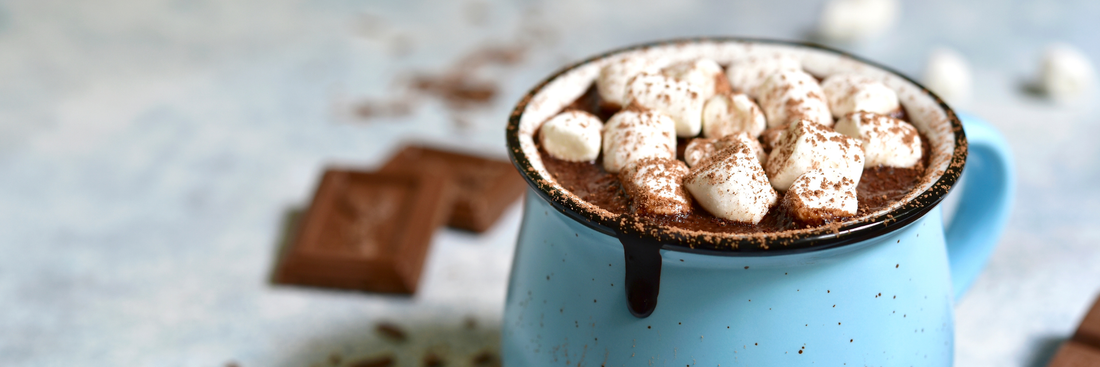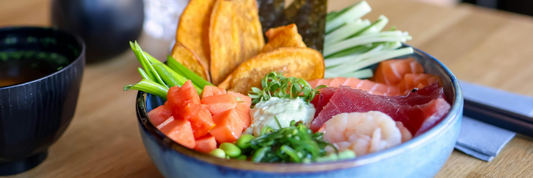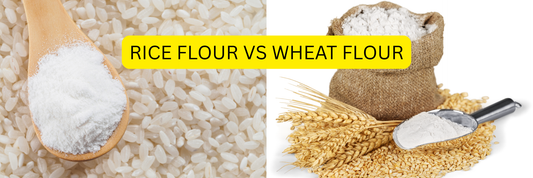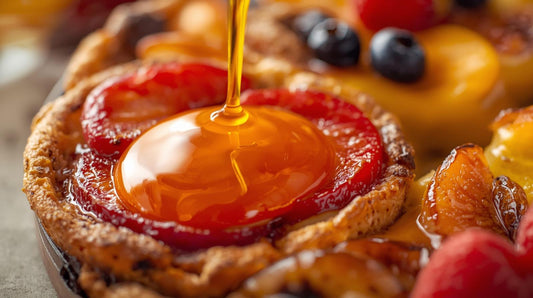Hot chocolate is one of the world’s most beloved comfort drinks, but not all cups are the same. From rich European-style sipping chocolate to spiced Mexican blends, there are many types of hot chocolate to explore. Each version has its own flavor, texture, and cultural twist. This article breaks down the most popular types of hot chocolate from classic, global, to modern to help you discover which one suits your taste best.
- Hot Chocolate Calories: How Many Are in Your Favorite Cup?
- Top Hot Chocolate Benefits for Heart, Brain, and Mood
-
Hot Cocoa vs Hot Chocolate: What’s the Real Difference?
Classic & Traditional Types of Hot Chocolate
American Hot Chocolate
The American version of hot chocolate is usually sweet, light, and milk-based, made by mixing cocoa powder, sugar, and milk (or water). It’s typically topped with whipped cream or marshmallows and enjoyed as a comforting, everyday drink. It’s thinner in texture than European versions and often uses instant cocoa mixes for convenience.
French Hot Chocolate (Chocolat Chaud)
French hot chocolate, or chocolat chaud, is known for its luxurious, rich texture and deep chocolate flavor. It’s traditionally made using melted dark chocolate (60–70% cocoa) combined with whole milk or cream, slowly whisked until smooth and velvety. Served in small cups, it’s thick enough to coat a spoon and is a staple in Parisian cafés, often paired with croissants or pastries.

Spanish Hot Chocolate (Chocolate Caliente)
Spain’s chocolate caliente is a thick, pudding-like drink made with dark chocolate, milk, sugar, and cornstarch for extra body. It’s a breakfast favorite, often served with churros for dipping. The flavor is less sweet than American versions, focusing more on the intense cocoa taste. In Spain, it’s common during cold mornings and festivals like Christmas.
Italian Hot Chocolate (Cioccolata Calda)
Italian cioccolata calda is one of the thickest and most decadent styles of hot chocolate. It’s prepared with high-quality dark chocolate, whole milk, and a touch of cornstarch, creating a dense, almost custard-like drink. Served in small cups, it’s rich enough to enjoy as a dessert. Italians often flavor it with vanilla or cinnamon, and it’s especially popular in winter cafés.
Best Italian Thick Hot Chocolate Recipe for a Rich Winter Treat
Mexican Hot Chocolate (Chocolate Caliente Mexicano)
Mexican hot chocolate stands out for its spice and texture. Traditionally made with stone-ground chocolate tablets (like Abuelita or Ibarra), it includes cinnamon, vanilla, and sometimes chili. The drink is whisked vigorously with a wooden tool called a molinillo to create a frothy top. It’s less creamy but full of warmth and spice, often served with pan dulce (sweet bread) during holidays or family gatherings.

Global Varieties of Hot Chocolate
Argentine Submarine Hot Chocolate (El Submarino)
In Argentina, el submarino (“the submarine”) is a fun and interactive version of hot chocolate. A bar of dark chocolate is dropped into a cup of steaming milk, then stirred until melted — resembling a submarine sinking and dissolving. The result is a smooth, lightly sweetened drink that highlights the chocolate’s natural flavor without added thickeners.
Colombian Cheese Hot Chocolate
A unique South American twist, Colombia’s hot chocolate is often served with pieces of mild cheese (queso campesino) dropped into the hot drink. The cheese softens and melts slightly, creating a savory-sweet combination. Locals drink it for breakfast, often alongside bread or arepas, enjoying the mix of flavors and textures.
Dutch Warme Chocolademelk Hot Chocolate
Dutch warme chocolademelk is a classic European-style drink that balances richness and lightness. It’s made with cocoa powder or melted dark chocolate, mixed with milk and sugar, and sometimes flavored with a touch of vanilla or cinnamon. The Netherlands’ high-quality cocoa powder gives it a smooth, aromatic finish. It’s a staple winter drink, often served with whipped cream or stroopwafels.
Filipino Tsokolate Hot Chocolate
The Filipino tsokolate (or tsokolate ah) is made using tablea — disks of pure ground cacao. The drink is prepared by dissolving the tablea in hot water or milk and whisking it with a batirol, a wooden whisk similar to Mexico’s molinillo. It’s strong, earthy, and slightly grainy, often enjoyed at breakfast with bibingka or pandesal. A richer version, tsokolate eh, adds milk and sugar for a creamier taste.
Indian Chai-Spiced Hot Chocolate
In India, hot chocolate is often blended with traditional chai spices like cardamom, cinnamon, ginger, and cloves. This version combines cocoa, milk, and warming spices to create a drink that’s both comforting and aromatic. It’s sometimes sweetened with jaggery or honey instead of refined sugar, making it naturally flavorful and caffeine-gentle.

Hot Chocolate by Preparation Style & Texture
Thick Hot Chocolate (Drinking Chocolate Style)
This type is dense and creamy, often made by melting real chocolate with cream or whole milk and sometimes a small amount of cornstarch. It’s meant to be sipped slowly and enjoyed like a dessert. Common in Italy, France, and Spain, thick hot chocolate is rich in cocoa butter and less sweet than powdered versions.
Powder/Instant Mix Hot Chocolate
Instant hot chocolate is made from pre-sweetened cocoa powder mixed with powdered milk or creamers. It’s quick and convenient — just add hot water or milk. While it lacks the depth of real chocolate versions, it remains a popular, budget-friendly choice, especially in North America. Some premium brands now offer low-sugar or high-cocoa instant blends for better flavor.
White Hot Chocolate
White hot chocolate uses melted white chocolate (made from cocoa butter, milk solids, and sugar) instead of dark or milk chocolate. It’s creamy, sweet, and buttery, with vanilla as the dominant flavor. This version is popular in cafés as a lighter, dessert-like alternative and can be flavored with peppermint, caramel, or spices.

Vegan Hot Chocolate
Vegan versions replace dairy milk with plant-based alternatives like oat, almond, soy, or coconut milk. The base chocolate must be dairy-free dark chocolate or cocoa powder. Coconut milk makes it creamier, while almond or oat milk keeps it lighter. Vegan hot chocolate often uses maple syrup or agave for sweetness and can be topped with coconut whipped cream.
Boozy/Adult Hot Chocolate
Adult hot chocolate adds liquor or liqueurs for extra warmth and flavor. Common additions include Baileys, Kahlúa, rum, bourbon, or peppermint schnapps. These versions are typically richer and served in small portions. The alcohol complements the cocoa’s depth, making it a popular holiday or après-ski treat.
Flavour & Ingredient Variations in Hot Chocolate
Dark Chocolate vs Milk Chocolate Hot Chocolate
Dark chocolate hot chocolate has a strong, bittersweet flavor and a higher cocoa percentage (usually 60–70%). It’s rich in antioxidants and less sweet, making it ideal for those who prefer a more intense chocolate taste. Milk chocolate hot chocolate, on the other hand, is smoother and creamier, with more milk solids and sugar. It’s lighter, sweeter, and often favored by children or those who enjoy a milder cocoa flavor. Both types can be made thick or thin, but dark chocolate versions tend to have a deeper aroma and more complex finish.
Spiced Hot Chocolate (Cinnamon, Chili, Cardamom)
Spiced hot chocolate adds warmth and complexity using aromatic spices.
-
Cinnamon brings sweetness and comfort.
-
Chili adds subtle heat and enhances cocoa’s bitterness — inspired by traditional Mexican hot chocolate.
-
Cardamom gives a fragrant, floral note often found in Indian-style versions.
These spices can be blended with dark or milk chocolate and are especially popular in winter and festive drinks. They not only enhance flavor but may also aid digestion and improve circulation.
Gourmet Hot Chocolate (Single Origin, Premium Chocolate)
Gourmet hot chocolate focuses on high-quality ingredients, often made from single-origin chocolate — beans sourced from one specific region such as Ecuador, Ghana, or Madagascar. Each origin brings distinct flavor notes, from fruity to nutty or earthy. Premium versions avoid artificial sweeteners or fillers and use real chocolate shavings or couverture chocolate instead of cocoa powder. The result is a drink with layers of flavor, smooth texture, and natural sweetness, often served in smaller portions to savor slowly.
Holiday/Festive Hot Chocolate (Peppermint, Caramel, Pumpkin Spice)
Festive hot chocolates are seasonal favorites that combine traditional cocoa with comforting holiday flavors.
-
Peppermint hot chocolate pairs mint extract with dark or white chocolate for a refreshing, candy-cane-inspired drink.
-
Caramel hot chocolate adds rich, buttery sweetness with a drizzle of caramel syrup or sauce.
-
Pumpkin spice hot chocolate blends cocoa with cinnamon, nutmeg, ginger, and cloves — a cozy fall classic.
These variations are popular in cafés during winter and are often topped with whipped cream, crushed candy, or sprinkles for a festive finish.
Health-Focused Hot Chocolate (Low Sugar, Protein-Enriched)
Healthier versions of hot chocolate replace heavy cream and refined sugar with natural sweeteners and functional ingredients.
-
Low-sugar hot chocolate uses unsweetened cocoa and small amounts of honey, stevia, or monk fruit.
-
Protein-enriched hot chocolate includes collagen, whey, or plant-based protein powder, turning the drink into a post-workout recovery option.
-
Dairy-free and antioxidant-rich blends use almond or oat milk with high-cocoa dark chocolate for added nutrition.
These versions balance comfort with wellness, offering a warm, satisfying drink that fits modern healthy lifestyles.
FAQs About Popular Hot Chocolate Flavors
Which hot chocolate type is healthiest?
Dark chocolate hot chocolate made with unsweetened cocoa, low-fat or plant milk, and minimal sugar is the healthiest option.
What hot chocolate type is best for children?
Milk chocolate hot chocolate is best for kids — it’s lighter, sweeter, and lower in caffeine than dark chocolate versions.
Conclusion
Across the world, hot chocolate takes on many forms, thick and creamy, light and sweet, or boldly spiced. Each type reflects local traditions and unique ways to enjoy cocoa. Whether you prefer classic American hot chocolate or the rich Italian cioccolata calda, there’s a version for every mood and season. Exploring different types of hot chocolate is a simple way to travel the world through flavor, one cozy cup at a time.







